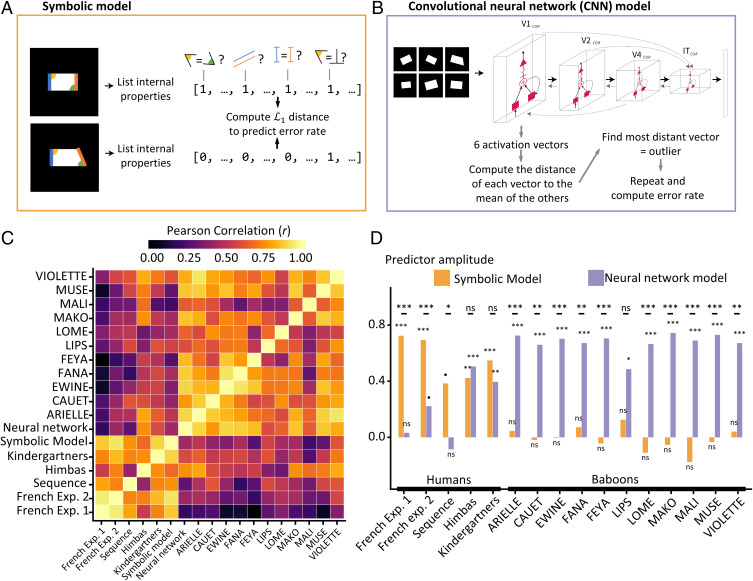Fig. 4.
A double dissociation in geometric shape perception. (A) Symbolic model. Each shape is coded by a vector of discrete geometric properties (equal angles, parallel sides, equal lengths, and right angles; each relationship is assumed to be detected with a tolerance of 12.5%). The distance between the standard and outlier vectors is then used as a predictor of the ease of intruder detection. (B) Neural network model (modified from ref. 58, with permission from the authors). CORnet, a model of the ventral visual pathway for image recognition, is used to encode each of the six shapes of a given trial by an activation vector in inferotemporal cortex (IT). The shape whose vector is the most distant (L2-norm) from the average of the five others is taken as the network’s intruder response. The predicted error rate is obtained by averaging across hundreds of trials. (C) Simple correlation matrix across shapes between the performance of individual baboons (names in capitals; Top), the predictions of the two models (Middle), and various human groups (Bottom). Color indicates the correlation coefficient, r. (D) Standardized regression weights (β) in a multiple regression of the data from various human and nonhuman primate groups across 44 data points (11 shapes × 4 outlier types) using the symbolic and neural network models as predictors. Stars indicate significance level (●P < 0.05; *P < 0.01; **P < 0.001; ***P < 0.0001).

